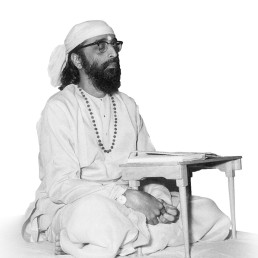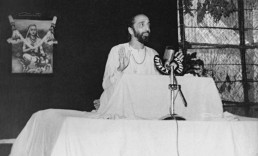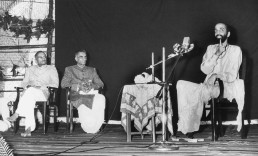
Jnana Yajna 41

Year & Dates:
May 15, 1958 to May 26, 1958

Yajna Topic:
Vivekachudamani

Place:
Bengaluru, India.
Knowledge reinforces devotion as much as devotion ripens knowledge. Pujya Gurudev, in all His discourses and yajnas, instilled an exquisite blend for seekers to experience the true growth of the head and heart. So, concurrent with the 40th Jnana Yajna on Bhakti Yoga which was being held at the ITI Colony, Pujya Gurudev conducted the 41st Jnana Yajna on Vivekachudamani in the mornings at Jayanagar, another suburb of Bengaluru. The Managing Director of ITI, Sri Jagadish Prasad, inaugurated the yajna on the morning of May 14, 1958; Sri Gurava Reddy, Chairman of the Jayanagar Community Centre and organizer of the Jayanagar yajna welcomed Pujya Gurudev and the gathering. The seekers of Bengaluru were excited and grateful. The sheer poetry and Vedantic clarity of Vivekachudamani as explained by Pujya Gurudev in an exclusive morning Jnana Yajna would be a true awakening.
Strengthening the Vedantic Base
Sri Adi Sankaracharya’s masterpiece, Vivekachudamani, is a Vedantic crest-jewel, and Pujya Gurudev’s expertise and eloquence enthralled the fortunate aspirants who attended that yajna. With heartfelt prostrations to the Guru and emphasis on the rare blessing that human life is, Pujya Gurudev explained how seekers could qualify themselves to be fit for spiritual success. He elucidated the key Vedantic terms, equipping all with the ability to rediscover the Highest within. The spellbound seekers experienced the poet, philosopher, orator, and the realized Sage in Pujya Gurudev as He brought out the brilliance of Vivekachudamani.
After listening to Vivekachudamani, it was but logical that the revered Arunaachala-Kshetra (Tiruvannamalai) was chosen as the destination for the yatra. So, Pujya Gurudev accompanied about 540 devotees who had attended both the Bhakti Yoga and Vivekachudamani Jnana Yajnas. The pilgrimage was memorable because of devotional bhajans and introspective satsangs. The Avabhrta Snaana was completed in the Amrta Theertha of the famous temple, and Pujya Gurudev led the devotees to a place called Moola Matha within the temple walls. There, everyone prostrated to a great, scholarly saint called Eshvara Svaami who spent his life in silent Tapas. Pujya Gurudev expressed His regard for the saint who lived a life of total renunciation like His own esteemed Guru Swami Tapovan Maharaj.
The darshan of the resplendent Agni Linga of Arunachala filled the hearts of all as they returned to Bengaluru. Pujya Gurudev, when He concluded the Jnana Yajna on the morning of May 26th, had richly endowed every seeker with the terminology, the path, and the destination of spirituality.

“Think,” Says Pujya Gurudev
In the spiritual treasure hunt, the endeavor of digging is made with the pickaxe of thought and the spade of discrimination. With these, we remove the earth – the attachments with the body, mind and intellect, which are the effects of the ignorance of the Self. Avidya creates in us various misunderstandings and it is these agitations of the mind and negative thought veilings of the intellect that conceal the Treasure Divine, the Self. These can be removed by reflection and meditation.
Manana and Dhyana – reflection and meditation – prepare the mind for a single pointed application by bringing it to the state of least agitation. This is the condition of the mind and intellect fit for vichara, the highest spiritual sadhana known to man. This is exhaustively indicated only in Vedanta.
From Vivekachudamani, Book
Change is Not for the Weak!
Is spiritual evolution possible without challenging our entrenched patterns? Discover why mere understanding isn’t sufficient to enact change and why spiritual practices are essential for growth. Spring into the depths of consciousness and learn how to replace old, worldly vasanas with spiritual ones. A thought provoking discourse that set us forth on our path towards self-realization.

